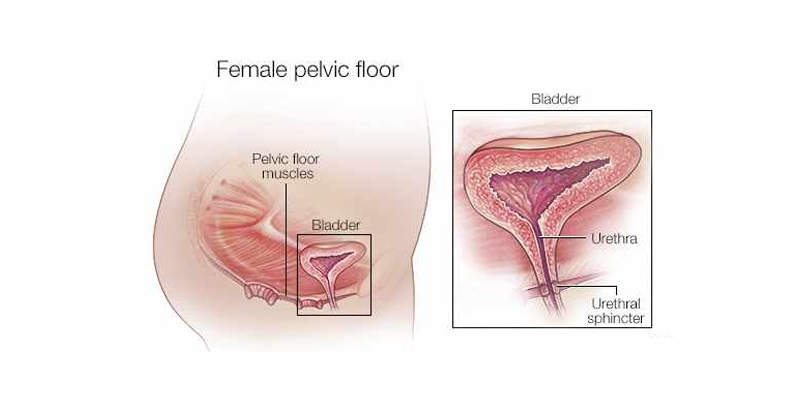FEMALE URINARY INCONTINENCE
- Home
- FEMALE URINARY INCONTINENCE
FEMALE URINARY INCONTINENCE - SIGNS & SYMPTOMS, MANAGEMENT, TREATMENT & SURGERY

Urinary incontinence is the inability to hold urine even till reaching the toilet. 1 in 10 women experience urinary incontinence. It is often temporary, and it always results from an underlying medical condition. (In this fact sheet, the term "incontinence" will be used to mean urinary incontinence.)
Women experience incontinence twice as often as men. Pregnancy and childbirth, menopause, and the structure of the female urinary tract account for this difference. But, both women and men can become incontinent from neurologic injury, birth defects, strokes, multiple sclerosis, and physical problems associated with aging.
Older women experience incontinence more often than younger women. But, incontinence is not inevitable with age. Incontinence is treatable and often curable at all ages. If you experience incontinence, you may feel embarrassed. It may help you to remember that loss of bladder control can be treated. You will need to overcome your embarrassment and see a doctor to learn if you need treatment for an underlying medical condition.
Incontinence in women usually occurs because of problems with muscles that help to hold or release urine. The body stores urine in the bladder, which is a balloon-like organ. The bladder connects to the urethra, the tube through which urine leaves the body.
During urination, muscles of the bladder wall contract and force urine out of the bladder and into the urethra. At the same time, sphincter muscles surrounding the urethra relax and let urine pass out of the body (see figure 1). Incontinence occurs if the bladder muscles contract suddenly or when the muscles surrounding the urethra relax suddenly.